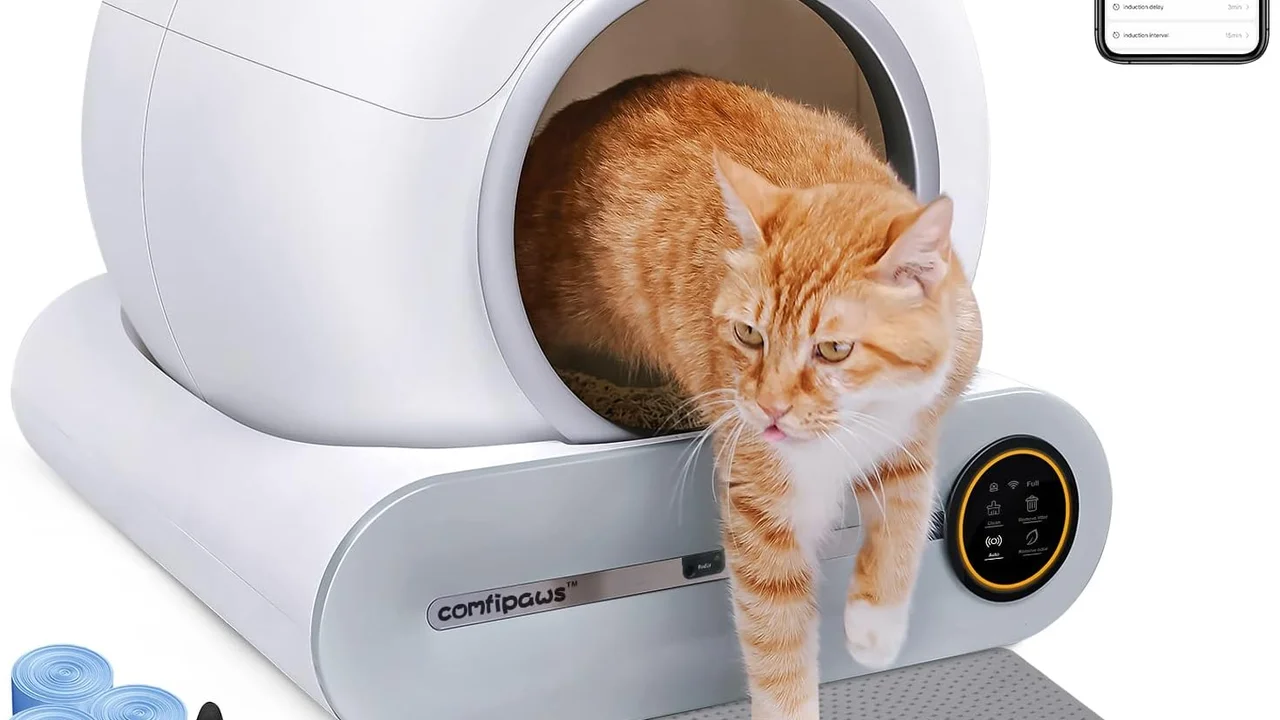7 Best Ways to Find a Lost Pet
Losing a pet is a stressful experience This article provides tips for finding your lost pet Increase your chances of a happy reunion

Understanding the Initial Panic and Immediate Actions for Lost Pets
Okay, so you've just realized your furry friend is missing. First things first: Don't panic! Easier said than done, I know, but a clear head will help you think logically and act quickly. The first few hours are crucial. Your immediate actions can significantly impact the chances of a happy reunion. Start by thoroughly searching your home and yard. Check under beds, inside closets, behind furniture, and any other hiding spots your pet might favor. Call your pet's name in a calm, reassuring voice. Sometimes, they're closer than you think but are simply scared or hiding.
Utilizing Social Media and Online Platforms for Finding Lost Pets
In today's digital age, social media is your best friend (besides your actual best friend, your pet!). Post a clear photo of your pet on your Facebook, Instagram, and Twitter accounts. Include details like their name, breed, color, any distinguishing features (a unique collar, a scar, etc.), and where and when they were last seen. Use relevant hashtags like #LostDog, #LostCat, #LostPet, #[YourCity]LostPet. Share your post in local community groups and neighborhood pages. Nextdoor is also a great platform for reaching people in your immediate vicinity. There are also dedicated websites and apps specifically designed for reuniting lost pets with their owners. Consider using platforms like Petfinder, LostMyPet, and PawBoost. These platforms allow you to create detailed lost pet profiles, upload photos, and distribute flyers to local shelters and veterinarians. Remember to regularly check these platforms for any updates or sightings.
Creating and Distributing Effective Lost Pet Flyers and Posters
Even in the digital age, good old-fashioned flyers and posters are still super effective. Design a visually appealing flyer with a large, clear photo of your pet. Include their name, breed, color, distinguishing features, and the date and location they were last seen. Offer a reward (if you're comfortable doing so) to incentivize people to keep an eye out. Print your flyers on bright, eye-catching paper. Post them in high-traffic areas like grocery stores, community centers, veterinary clinics, animal shelters, and busy intersections. Ask local businesses if you can hang a flyer in their window. Consider offering a small treat or discount to businesses that help you spread the word. Hand out flyers to neighbors, mail carriers, and anyone else who might have seen your pet. The more people who are aware of your missing pet, the better your chances of finding them.
Contacting Local Animal Shelters and Veterinary Clinics for Lost Pet Information
Animal shelters and veterinary clinics are often the first places people take found animals. Contact all the shelters and clinics in your area (and even surrounding areas) to report your missing pet. Provide them with a detailed description of your pet, including their breed, color, age, sex, and any distinguishing features. Leave your contact information and ask them to keep an eye out for your pet. Visit the shelters and clinics in person to see if your pet is there. Even if you've already called, a visual confirmation is always a good idea. Regularly check back with the shelters and clinics, as new animals are constantly being brought in.
Expanding Your Search Area and Considering Your Pet's Personality for Lost Pet Recovery
As time passes, expand your search area. Your pet may have wandered further than you initially thought. Consider your pet's personality when planning your search. If your pet is shy and timid, they may be hiding in a quiet, secluded area. If your pet is outgoing and friendly, they may be approaching people for attention. Focus your search efforts in areas that align with your pet's personality and habits. If your dog loves to play fetch, check local parks and dog runs. If your cat enjoys sunbathing, search sunny spots in your neighborhood.
Using Scent and Familiar Objects to Attract a Lost Pet Back Home
Animals have a strong sense of smell. Use this to your advantage by placing familiar objects outside your home to attract your pet back. Place your pet's bed, blankets, toys, and even your own clothing outside. The familiar scents may help your pet find their way home. Consider using a humane trap baited with your pet's favorite food. Check the trap regularly to ensure your pet is safe and comfortable. Be patient, as it may take some time for your pet to find their way back.
Leveraging Technology: GPS Trackers and Microchipping for Pet Safety
Prevention is always better than cure. Consider investing in a GPS tracker for your pet. These devices attach to your pet's collar and allow you to track their location in real-time using your smartphone. There are several GPS trackers available on the market, each with its own features and price point.
Product Recommendations: GPS Trackers for Pet Safety and Lost Pet Recovery
Here are a few popular GPS trackers for pets, along with their key features, pros, cons, and approximate prices:
- Tractive GPS Dog Tracker: This is a popular option known for its accurate tracking and activity monitoring features.
- Key Features: Real-time GPS tracking, activity monitoring, virtual fence (geofencing), waterproof, worldwide coverage.
- Pros: Accurate, reliable, long battery life (up to 7 days), good value for money.
- Cons: Requires a subscription plan.
- Price: Approximately $50-$80 (plus subscription).
- Use Case: Ideal for pet owners who want reliable tracking and activity monitoring, especially in areas with good cellular coverage. Imagine you're at the park and your dog takes off after a squirrel. With Tractive, you can pull out your phone and see exactly where they are, even if they're out of sight.
- Whistle Go Explore: This tracker offers GPS tracking, activity monitoring, and health insights.
- Key Features: GPS tracking, activity monitoring, health insights (scratching, licking, sleeping), virtual fence, waterproof.
- Pros: Comprehensive data, health alerts, easy to use app.
- Cons: More expensive than some other options, requires a subscription plan.
- Price: Approximately $130-$150 (plus subscription).
- Use Case: Great for pet owners who are concerned about their pet's health and want detailed insights into their activity levels and potential health issues. Let's say your dog starts scratching more than usual. Whistle Go Explore can track this and alert you, potentially helping you catch a skin issue early.
- Apple AirTag (with a suitable collar attachment): While not specifically designed for pets, AirTags can be used as a budget-friendly tracking option, especially if you're already invested in the Apple ecosystem.
- Key Features: Uses Apple's Find My network for location tracking, relatively inexpensive.
- Pros: No subscription fees, large network of users to help locate your pet, inexpensive.
- Cons: Relies on other Apple devices being nearby to update location, not designed for pets (requires a separate collar attachment).
- Price: Approximately $29 (plus collar attachment).
- Use Case: A good option for pet owners in urban areas with a high density of Apple device users. If your cat slips out the door, the AirTag can leverage the Find My network to hopefully pinpoint their location as they pass near other Apple devices.
Comparison: Tractive offers a good balance of features and affordability for general tracking. Whistle Go Explore provides more detailed health insights but comes at a higher price. AirTags are a budget-friendly option but rely on the Apple network and aren't specifically designed for pets. Consider your budget, desired features, and the environment where your pet will be tracked when making your decision.
Another essential step is microchipping your pet. A microchip is a small, electronic chip implanted under your pet's skin. It contains a unique identification number that can be used to identify your pet if they are lost and taken to a shelter or veterinary clinic. Make sure your pet's microchip information is up-to-date with your current contact information. This is crucial for ensuring you can be contacted if your pet is found.
The Importance of Never Giving Up Hope and Continuing the Search for Your Lost Pet
Finding a lost pet can be a challenging and emotional experience. It's important to remember to never give up hope. Pets have been reunited with their owners after months, even years, of being missing. Continue your search efforts, even if you feel discouraged. Keep posting flyers, checking shelters, and spreading the word. Don't lose faith that your furry friend will eventually find their way back home.
:max_bytes(150000):strip_icc()/277019-baked-pork-chops-with-cream-of-mushroom-soup-DDMFS-beauty-4x3-BG-7505-5762b731cf30447d9cbbbbbf387beafa.jpg)






